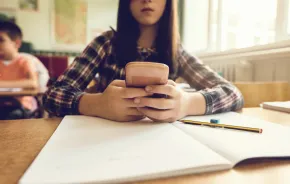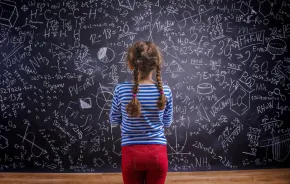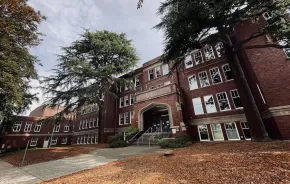 It turns out, teenagers can be energetic early in the morning if you give them something to get excited about.
It turns out, teenagers can be energetic early in the morning if you give them something to get excited about.
Last Friday at Seattle's KeyArena, while I was still waiting for my second cup of coffee to kick in, the 15,000 teens present at We Day Seattle were on their feet dancing and making noise.
Billed as the largest youth empowerment event of its kind, We Day took Seattle by storm when it made its U.S. debut here last year. Jennifer Hudson sang inspirational music. Mia Farrow and Magic Johnson gave rousing speeches. Macklemore was the surprise guest.
The brainchild of Free the Children Canadian youth activist Craig Kielburger and his brother Mark, We Day began in 2007 in Toronto. It's tied to We Act, a yearlong education program and support system helping schools, community groups and individuals turn their ideas into actions, and Me to We, a for-profit social enterprise. This family of organizations is designed to spark a generation to think and act collectively and globally.
It refers to itself as "the movement of our time."
"Our time" is the operative phrase. We Day is all about youth empowerment, 21st-century style. That means global connection and connectivity and lots of meaningful "memes," a word with lofty scientific origins, but which, in the teen world, refers to a succinct way to quickly spread ideas, usually via social media.
You can't buy a ticket. You have to earn it.
Teens get in the stadium door by demonstrating they have made a commitment to at least one local and one global initiative over the course of the year.
We Day organizers have impressive statistics to demonstrate the movement's impact, which is tracked through reporting mechanisms and via third-party analysis.
In 2014, 180,000 youth will be involved with the initiative. Locally, that translates to 15,000 Washington students and teachers from over 450 schools around the state. In the past year, Washington participants have raised more than $500,000 and logged over 820,000 volunteer hours to benefit more than 250 local and global organizations. Globally, since it began in 2007, We Day participants have raised $37 million for 1,000 causes, volunteered 9.6 million hours and collected 4 million pounds of food.
This year's Seattle program kicked off with a speech by Martin Luther King III.
His meme: "Be ashamed to die, unless you've done something to make the world a better place."
What followed was a montage of sports figures, corporate leaders and actual kids talking about the power and possibility of making a difference. Among them were Nandie Oosthuizen, honored as Washington's Youth Philanthropist of 2007 and founder of Hand & Heart, a non-profit organization that promotes #hobby philanthropy and #voluntourism. (Like memes, hashtags are another important youth communication tool.)
Caleb and Joshua Dawson, two dynamic brothers from Federal Way, described paying forward the charity received by their mother, a handicapped child in Ethiopia, who was brought to the U.S. to receive an education. "Where we are does not change who we are," said Caleb. "I am Caleb everywhere I go and I can make a difference everwhere."
"How can you change the world when you can't even get the car keys from your dad?" mused actor Edward Norton.
In response, We Day's message is loud and clear: You are never too young to change the world.
At lunchtime I caught up with some of the day's student participants who had earned their way into this event.

Jessica Konen, Tea Einarsen and Wilson Lessley from Evergreen Middle School in Everett described the tutoring program they helped start at their school in response to seeing students bullied because of poor grades. Evergreen students are also raising funds to benefit a clean water and sanitation project in Haiti.
Lessley, an eighth-grader, says he was most inspired by We Day speaker Spencer West, a double amputee who climbed Mount Kilimanjaro. With his hands.
West's meme: Redefine what is possible.

After teacher Christina Posten received curriculum support at a We Act information session, Taryn Smith, a junior, and Katie Blackett, a senior, say they and their peers at West Seattle High School chose to tackle the issue of homelessness, a growing problem for youth and families in Washington state. They donate clothing and make backpacks, school supplies and toiletries available at a teen health center on the school's campus. They are organizing a concert to benefit Youth Care's James W. Orion Center for Homeless and At Risk Youth.
Their meme: Our generation will define the future. We have to take care of each other.
Getting the boys involved
"Community service means getting people side-by-side," said Janice Rapp, a teacher at Seattle's Evergreen School. "Your gift is your character."
Rapp says she was so inspired by We Day 2013 that she was ready to drop everything to support the movement. But a chief concern of hers, she said, gesturing to the all-girl contingent she had brought with her to the event, is getting boys more involved.
"Women have been volunteers forever," she said. "Boys don't naturally do this, but they stand to benefit the most."
I exited the event, just as a spontaneous flash mob broke out.
I could hear the dancers chanting, "We are all friends."

Later, reflecting on We Day without any teen energy to buoy me, I wondered whether such a high-profile event is necessary to spark inspiration.
Like anti-bullying, the importance of global action and concern for the greater good is entering common parlance among our youth.
That's a good thing.
And something worth making the most of.
They have a dream
Does We Day's message of action stick? Here's a hopeful stat: A staff member for the charitable foundation of former Microsoft CEO Steve Ballmer (Microsoft is one of several sponsors who helped bring We Day to Seattle), told me that nearly 90 percent of kids involved in We Day make it a point to vote when they become of age (youth voter turnout was approximately 50 percent in 2012).
Even if I hadn't read Dr. Dan Siegel's book, Brainstorm: The Power and Purpose of the Teenage Brain, I live with two teenagers and am aware of the solidarity they feel with each other, their growing awareness of the world and its problems and their desire to do something about it.
"You are the most powerful generation of teenagers in history," Edward Norton told the crowd.
I thought about the Vietnam War protestors, civil rights workers and the youth who had fought in World Wars I and II and wondered whether he was right.
This generation of teenagers is the most globally connected and the message of empowerment has been reinforced to them in countless ways. To sit in a stadium, view images of Nelson Mandela and Martin Luther King, Jr, to hear the stories of the famous and the ordinary, the young and the not-so-young is inspiring. Hopefully, the afterglow of such an experience lasts for a long time.
In 1950, when my mother was 16, she attended the Shawnee Leadership Institute for World Problems and Affairs, a summer camp in Vermont for youth from around the world. She talked about that experience for the next 50 years and I am convinced it informed her actions until the day she died.
At a press conference just prior to the start of We Day, Craig Kielburger and Seattle Seahawks coach Pete Carroll (another instrumental sponsor of We Day Seattle) spoke frankly about how to measure the success of We Day.
"The true test," said Kielburger "is whether these kids will still be giving in 20 years."
l











